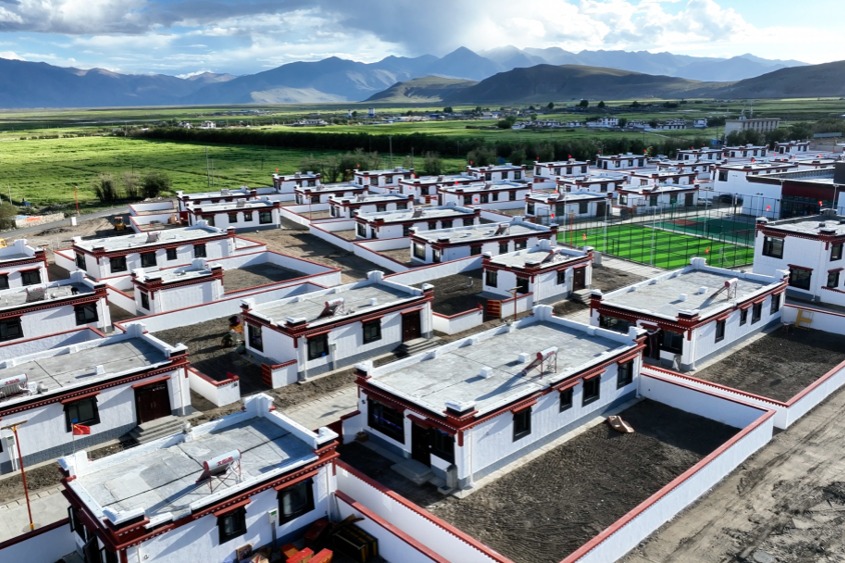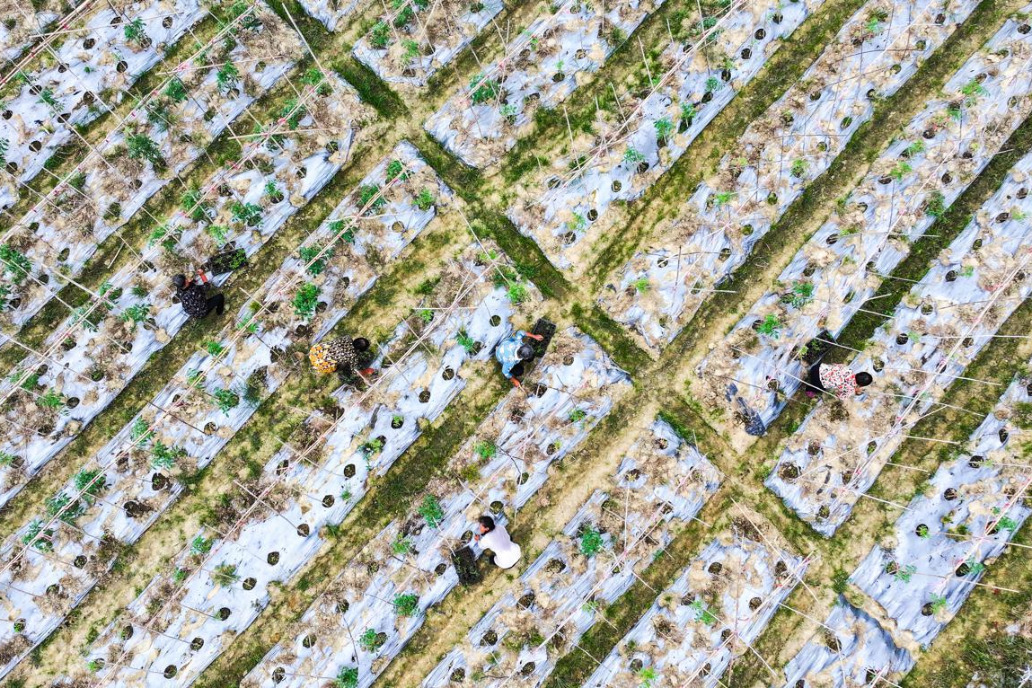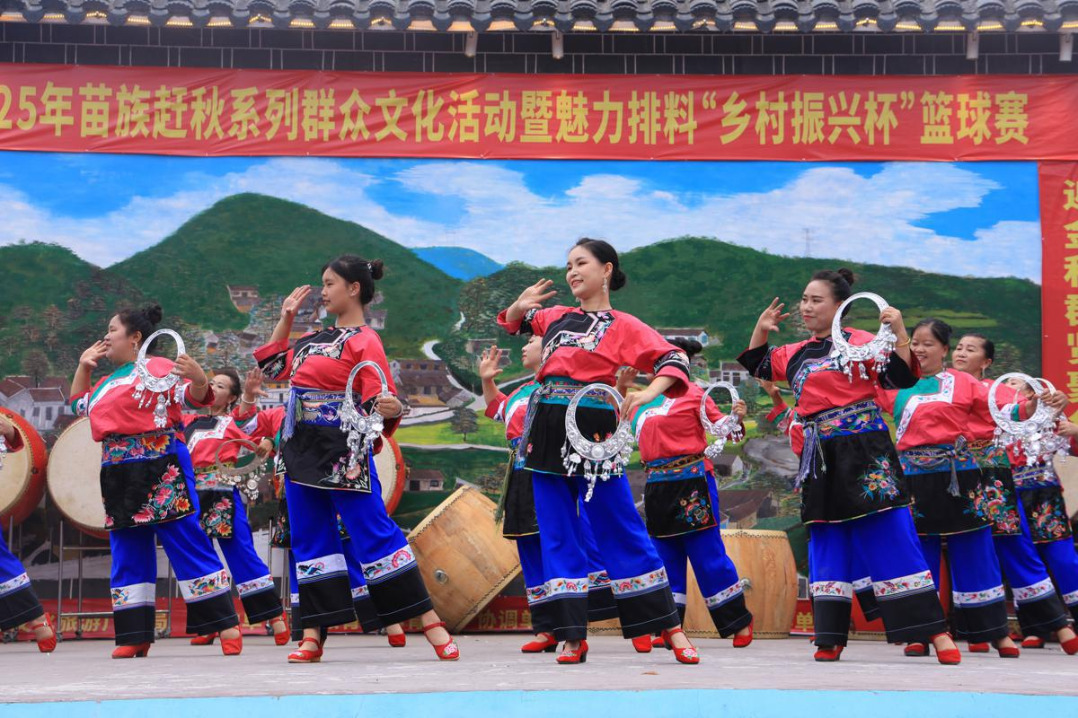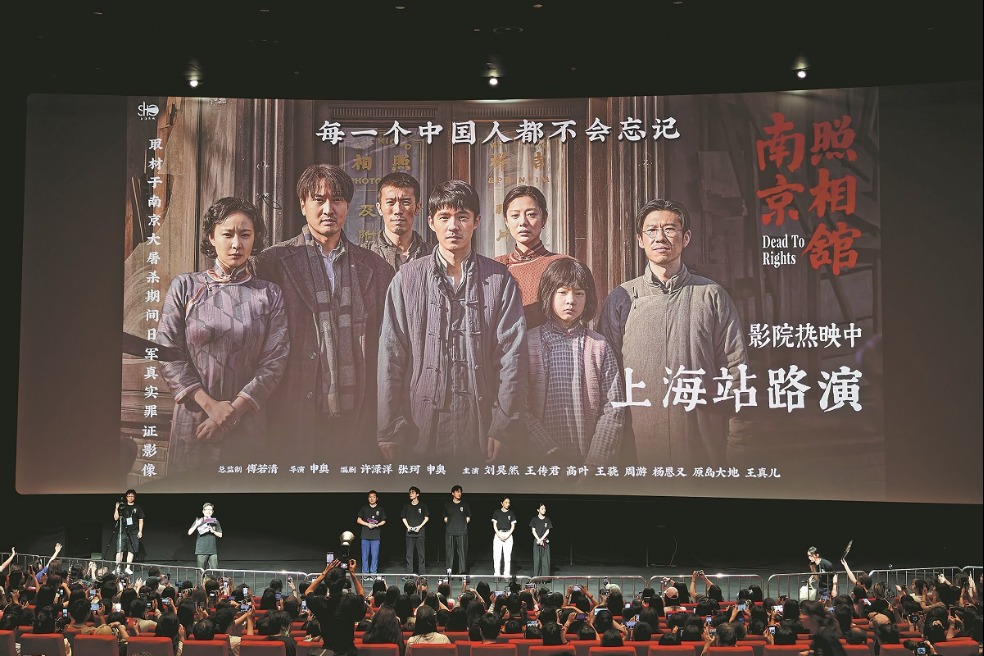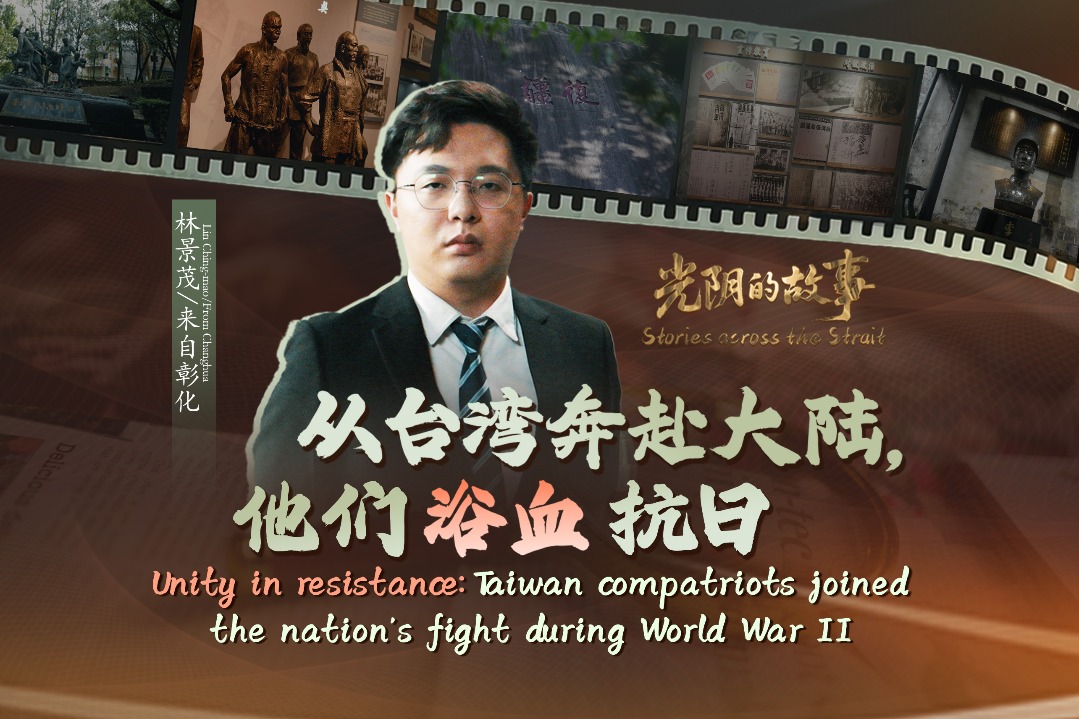Avant-garde art enlivens rural China amid revitalization drive

XI'AN -- People wearing straw hats painted with images of stray cats or sunflowers are popping up in the wheat fields of Northwest China, taking the place of farmers who can finally sit back and relax after the summer harvest.
For more than five years, over 100 artists have traveled to Caijiapo, a once-impoverished village nestled in the Qinling Mountains, about 50 kilometers from Xi'an, the provincial capital of Shaanxi. Little by little, they have turned this village into an art lab, a tourist destination and an ideal location for young entrepreneurs through an infusion of artistic activity.
This five-year art "experiment" has opened a special path for China's rural modernization, according to Yu Ningkai, director of the Rural Development Institute of the Shaanxi Academy of Social Sciences.
"On one hand, it allows relatively regressive rural areas to cultivate multiple industries and increase farmers' incomes," Yu said. "On the other hand, it preserves the village's landscape and keeps the Chinese people's idyllic dreams alive."
He said that art draws many urbanites to the countryside -- a place where humans and nature coexist in harmony. It also promotes the common prosperity of urban and rural areas, and opens a new path for China's rural modernization.
In recent years, China has been calling for efforts to advance rural revitalization across the board and ceaselessly strive for the modernization of agriculture and rural areas. Accordingly, numerous Chinese villages have proactively developed industries with their own characteristics.
ART FESTIVAL IN WHEAT FIELDS
In Caijiapo village, artworks are seen everywhere: portraits pop up in wheat fields, and murals and graffiti are painted on the outer walls of houses -- and even on a water tower. A tree-shaped windmill is titled "Flourishing Flowers," and a giant glass installation reflects the mountain scenery.
Local Chen Meng said that Caijiapo had its first profound encounter with the arts in 2018, when the village hosted the first Guanzhong Mangba Arts Festival.
During that festival, artists placed tall flagpoles in the wheat fields, on top of which hung huge portraits of the owners of the fields. "It symbolized the relationship between people and their land, and paid tribute to the vast number of Chinese farmers," Chen said.
In the 1990s, the villagers lived tough and simple lives. They walked on dirt roads and fired up clay ovens to cook and heat their homes. They worked hard to make ends meet, and had no time for the arts. In the early 2010s, many people of working age quit the village to look for work, leaving behind mostly children and the elderly.
"At that time, I felt the village was getting emptier and I could not see anyone on the roads after dinner, which was scary," said villager Zheng Jun, 60. "When the artists first came, we didn't expect that they would bring such a change to the village."
Cui Kaimin, one of the first artists to visit the village, is a teacher at the Xi'an Academy of Fine Arts. Cui said the first art festival was the result of a social research project conducted in 2018 by teachers and students at the academy. During their research, they found that the village was picturesque but had been "hollowed out" by migration.
"When the young students arrived, many elderly villagers invited them to their homes for dinner, hoping to chat and discover something new," Cui recalled.
In their conversations with locals, the students learned about a folk custom, "Mangba meeting," meaning "gathering in the fallow season" in the local dialect. Traditionally, after the annual wheat harvest, farmers on the Guanzhong Plain enjoy a period of leisure, visiting relatives and friends to share steamed buns and fruit.
During the first festival, various activities were held in the wheat fields, including the staging of short sketches by villagers and avant-garde dramas. The teachers and students also crafted artworks from wheat straw and tree branches, turning the village and fields into art spaces.
The event struck a positive chord. In 2018, the festival's first edition attracted a large number of tourists, providing a new market for the village's agricultural products.
The village, which has a population of nearly 4,000, began to systematically transform itself into a venue for the arts based on this early success, developing a range of creative events, along with services and facilities for visitors and professionals.
During this year's Dragon Boat Festival holiday, which lasted from June 22 to 24, Caijiapo received more than 50,000 tourists.
Caijiapo is not alone in utilizing art in its development. Home to some 8,000 painters, Dafen is a village known for oil painting in southern China's Shenzhen city. Its painting industry started in 1989, and the village has since been using its artistic resources to boost rural revitalization.
BREATHING NEW LIFE INTO OLD VILLAGE
Earlier this month, the fifth Guanzhong Mangba Arts Festival opened in Caijiapo, now a major cultural event in the village.
Wu Xiaochuan, a professor at the Xi'an Academy of Fine Arts, said this year's festival will last for four months. The artists have arranged a series of activities, such as a theater festival and exhibitions with themes related to rural life, to provide a cultural feast for the locals.
Yu Xiaoqin, a 72-year-old Caijiapo native, said her life used to be monotonous. "In the past two years, however, I have watched dramas and listened to rock music and symphonies in the wheat fields. I hate to miss out on any of these," she said.
"The purpose of the art experiment is to promote rural development. We want to enrich the villagers' lives through art so that they can experience a richer spiritual and material world," Cui said.
According to Qin Weidong, the village's Party chief, Caijiapo used to be a poor village, and its people earned their living by growing crops and migrating to other places in search of work. Thanks to the art experiment, the village's annual per capita income reached 21,000 yuan (about $2,947) last year, and its total annual tourism revenue exceeded 14 million yuan.
The experiment has not only brought a range of novel experiences to local residents, but has also provided an opportunity for tourists to experience a pastoral lifestyle.
The Zhongnan Mountains, the part of the Qinling Mountains in which Caijiapo is located, has been a place with a secluded culture since ancient times and an iconic presence of the Chinese people's pursuit of harmony between human and nature.
Therefore, protecting nature and retaining the beauty of the countryside during the art experiment is the primary consideration of artists and local governments. In 2021, artist Song Qun was hired by the local government as Caijiapo's "chief artistic officer," and is mainly responsible for the village's art planning and design.
"Caijiapo is surrounded by mountains and rivers, and its own beauty is a major attraction. The experiment only guides tourists to discover its original beauty," Song said. "While transforming the village, we pursue minimalism and will not change its appearance drastically."
For Liu Yongfeng, a tourist who grew up in the countryside, Caijiapo is very different from traditional Chinese villages. "Caijiapo is fashionable and modern, but it reflects the charm of the countryside, and it provides a good source of nostalgia."
By embracing the arts, Caijiapo has undergone a profound transformation, both economically and socially. Such changes are exemplary and have inspired surrounding villages to explore their own similar paths.
Xiazhuang Village, for example, has built a demonstration area to pass on new folk arts to future generations. And Liyukou village has built a reception hall to nurture a cluster of creative cultural industries. These efforts have drawn professionals to the village and boosted local development.
Through social media, Liyukou's Two Tree Coffee attracts about 100,000 people every year. Its owner, Wang Huiting, who received her doctorate from Xi'an University of Architecture and Technology, moved to the village in 2019 to start her business, driven by her love of the beauty of the Qinling Mountains.
Song Naihong, 45, a villager from Liyukou, used to run a noodle restaurant. In 2022, when the coffee store began recruiting, she signed up and learned to use computers and make coffee. Today, she is a coffee making master proficient in latte art. "As the job requires me to keep learning and encountering new things, I feel that my life is really fulfilling," she said.
Hua Peixiang, director of the rural revitalization bureau of Huyi District, which administers Caijiapo, said that rural modernization depends mainly on talent.
"Huyi has established an alliance that has attracted more than 40 young entrepreneurs to work in the countryside, and has invited five famous artists to serve as 'chief artistic officers' to guide rural construction," Hua added.
Yu Ningkai said these initiatives, which have a pioneering spirit, will foster new methods of development and blaze new paths in line with local conditions. "The development of Caijiapo is making the future of China's rural modernization more perceptible," he said.
- China renews blue alert for rainstorms
- China holds 2nd rehearsal for event marking 80th anniversary of victory over Japanese aggression, fascism
- 2025 World Humanoid Robot Games push tech innovation boundaries in the arena
- China renews alerts for rainstorms, mountain torrents, geological disasters
- Several public officials punished for dereliction of duty in Guangxi
- Minivan falls into sea, leaving 6 dead and 2 missing
















